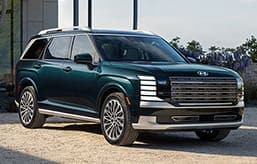- The recently refreshed Tesla Model 3 is a great EV.
- We liked it so much that we bought one for our long-term fleet.
- But there's always room for improvement. Here are a few suggestions.
3 Changes That Would Make Our Tesla Model 3 Even Better
A few small updates could make a big difference
Many Tesla fans seem to think Edmunds has some sort of unspoken vendetta against the EV maker. We don't. In fact, when you consider we bought a Model 3 for our long-term test fleet and gave it a very strong rating score of 8.1 out of 10, you get a far more complete picture on what we actually think of this incredibly popular electric sedan.
The Model 3's big Highland refresh represented a huge step in the right direction. It took the solid foundation that was the old Model 3 and added more sound insulation to better cancel out road noise and brought softer springs with frequency-sensitive dampers for a better ride, among other changes. Nearly every body panel is new as well, plus there are new front upper control arms, new brake parts to help improve cooling, and much more. These updates are the real deal, people; this isn't just another software release.
The results are profound. The Model 3 is now more handsome, better to drive, better built, and its ride is one of the best at its price point. Speaking of price, the Model 3 is still a pretty good deal: A long-range, rear-wheel-drive model (that gets an anxiety-quelling 363 miles of claimed range) costs $44,130 before you factor in any incentives. That's cheaper than a Hyundai Ioniq 6 SEL, which also has less range.
See? We can say nice things about a Tesla. No one's trying to hurt your feelings or derail your stock portfolio.
But of course, no car is perfect. Here are a few things that continue to hinder our Model 3, and some changes that would make this very good car even better.
Turn signal and gear selector stalks
This one probably stings the most because, while these stalks weren't something the pre-refresh Model 3 was lauded for, they were at least there. Our new Model 3 has no stalks whatsoever — instead, it requires you to swipe on the screen to choose which direction you want to go or use the overhead buttons on the panel where the hazard lights are. That panel is only there to ensure you can shift between park, reverse, neutral and drive if the screen gets damaged or cuts out. But why take that chance at all? It's a change that makes using the car for its primary function (that is, transportation) more cumbersome.
The same goes for the turn signals, something we've already discussed in detail.
The point is, Tesla didn't need to delete these stalks. There is no reason to cut costs in an area that so directly affects your operation of a vehicle. I'm sure there are many people who would gladly pay Tesla a few extra hundred dollars to have proper turn signals or gear selector stalks reinstalled. I mean, look at how well Tesla's regular steering wheel sold once the yoke finally fell out of fashion.
A (real) cover for the glass roof
Glass roofs are cool, until they're not. Literally. If you leave the Model 3 in the sun for any extended period of time — to, oh, I don't know, charge the car — the cabin gets maliciously hot. And yes, you can run the air conditioning and keep the Model 3 cool while it charges, but that does nothing to protect the interior surfaces themselves. Your butt, back, elbows and hands all touch parts of the car that are well exposed to the sun's rays, and considering it's been over 100 degrees near Edmunds HQ lately, there simply isn't enough air conditioning in the world to fix that problem. Even then, It doesn't have to be that hot for the sun to heat up a surface.
I know Tesla sells a sunshade for covering the Model 3's glass panel, but when I checked Tesla's site, it was out of stock (no surprise). Why not just include one with the car? Or better yet, Tesla could give prospective buyers the option for a metal roof, or build in a folding sunshade like nearly every other automaker, or design some kind of electrochromic tinting function like the ones Audi, BMW and Porsche have all been able to implement. Any of those would help, but for now, buyers have to settle for an overpriced, dinky piece of fabric — that is, if it ever gets back in stock.
A gauge cluster
I've spent plenty of time in Model 3s of various years and specs, as well as our long-term Model Y. After all that time, I still want a proper gauge cluster, like the one in the Model S, shown above. The Model S and X have them, and they're significantly better for it. Information at a glance is invaluable when you're on the road, and it still feels nonsensical to put in the center screen what could (and should) be right in front of you. It's not that the readout isn't clear or that the execution of the idea here is somehow flawed — it's that the concept itself hurts more than it helps.
These quality-of-life changes might cost a buyer a little bit more up front, but there's little doubt they'd only make the experience of Model 3 ownership better.






 by
by  edited by
edited by